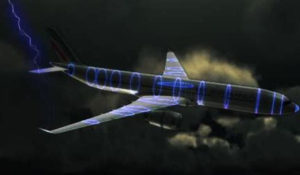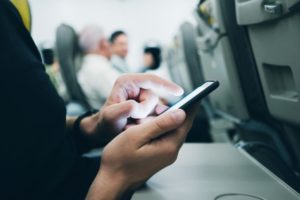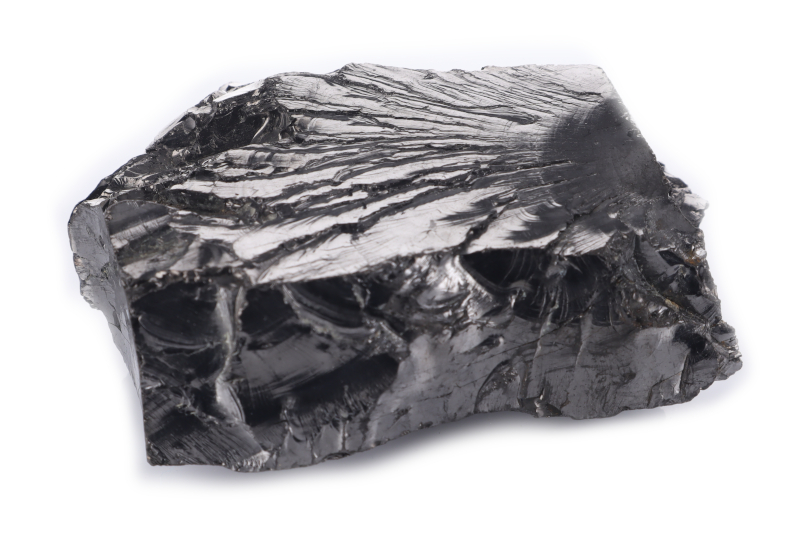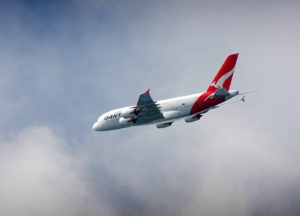Articles
Shungite and plane Travel
Having the ability to see the world in only hours is truly amazing. But, as is also evident with other forms of transportation and technology in general, with such advancement can come potential negative consequences.
Aeroplanes and EMFs
Aeroplanes are a fantastic way to travel, quick and generally safe but inside a plane, there can be large sources of EMFs: the cockpit and communications equipment, jet engines, electrical wiring and sensors, static electricity in the fuselage, WiFi, and other passengers’ devices.
What makes exposure worse in an aeroplane is not the number of EMF sources, but the emissions created due to the Faraday Cage Effect.
Planes have a metal mesh built into their walls from hull to tail to deflect lightning strikes. This turns an airplane into a sort-of Faraday cage, which is a metal cage surrounding an object to exclude electrostatic and electromagnetic influences. It is not a perfect Faraday cage because of the communication antennas and the windows, which create small holes in the cage.
When a plane is struck by lightning, the charge hits the metal and conducts along the exterior of the plane, discharging itself and striking the ground without harming passengers or equipment, which has very heavy shielding surrounding it.
However, just as Faraday cages keep electromagnetic activity outside the plane, it also keeps EMFs inside.
Due to the Faraday Cage Effect, WiFi is one source of EMF radiation that can impact plane passengers.
Many aeroplanes are equipped with WiFi hotspots to allow you to stay connected, even during long Transatlantic flights. However, we know exposure to WiFi can be harmful, regardless of where you are connecting. With the roll-out of the 5G Networks, we fear this will only get worse.
There are two ways inflight WiFi works: ground-based mobile broadband towers or satellite technology.
Towers on the ground send signals up to the aircraft’s antennas, which are located on the bottom of the fuselage. As the plane travels, it connects to the nearest towers so that the signal is maintained. Issues with this type of WiFi occur when travelling over remote areas or a large body of water, as there are no towers to connect to.
The second way WiFi works onboard is by connecting to satellites that are in geostationary orbit (approx 35785.373 km from the ground). The plane and satellites communicate with signals sent via receivers and transmitters. The antennas on the top of the aircraft distribute the signal to passengers using a router. 
Many major airlines are equipping their planes to provide WiFi for their passengers. A 2018 survey conducted by RouteHappy, the industry leader for evaluating in-flight amenities, found that 82 airlines now offer onboard WiFi and nearly half of all seat miles worldwide offer the chance to connect while flying.
Most passengers want faster Internet access requiring greater broadband—Internet access that can stream movies, TV shows, and Netflix, transfer large files, and play online games—the amount of EMF radiation being emitted may increase. This WiFi radiation is then being contained and therefore magnified within the airplane due to the Faraday Cage Effect.
Next time you fly, take a few easy steps to ensure you have a safe and healthy flight!
What we do when traveling
When we travel, especially by plane, we are exposed to massive amounts of EMFs. We always wear Shungite on planes and carry it with us during our travels. We find it helps with jetlag as well EMF issues. Below are the usual pieces that we wear and carry.
Pendant
Bracelet x 3
Earrings
Flat stones x 4
Sometimes a tile to use under our feet
There are endless possibilities and you can add anything else you feel comfortable with but this is where we start!
Don’t Forget the Number 1 Tip – Drink water!
If you step off of a plane and feel like crap, it probably isn’t because you’re sick, but because you’re dehydrated. Not drinking and retaining enough water can make you feel fatigued, have headaches, and have nausea, and aeroplanes are the perfect environment for draining you of all moisture.
How Much Water You Should Drink
How much water you need to drink depends on how long your flight is. According to the Aerospace Medical Association, you should drink about 240mL of water for every hour you’re in the air. Peter Hackett, MD, the director of the Institute for Altitude Medicine, states it is especially the case if you’re on flights longer than three or four hours. Flights shorter than that won’t be too dehydrating otherwise, says Hackett.
But you shouldn’t drink all of that water at once. Leonard Smith, a gastrointestinal and vascular surgeon, explains that pounding an entire bottle of water at once doesn’t do much for hydrating. If you drink too much water too fast, you dilute your blood, which causes your kidneys to excrete water faster, and that means you’re peeing out all that water before your body can use it to hydrate itself. No chugging! That said, if you do drink too much water, you at least force yourself to get up and go to the bathroom, which helps prevent blood clots in your legs. But you can always get up to move even if you don’t have to pee.
Basically, you’re flying in a sky desert, where the humidity hovers around 10-20 per cent (drier than the Sahara) thanks to the plane’s air circulation system. Compare that to the typical 30-60 percent humidity you’re used to on the ground and it’s no wonder flying dehydrates you.
A hydrated body also helps to move toxins through the body quicker and increases the natural electrical flow within. Avoid alcohol, and sugary and caffeinated drinks because these have a dehydrating effect on the body. We also suggest popping a small piece of Elite Shungite in the water you are drinking on the plane.
Hope this helps so that when we all get back in the air post- Covid we can fly safer and happier! I know we can’t wait to visit our Shungite Suppliers again soon!
Safe and healthy travels!







